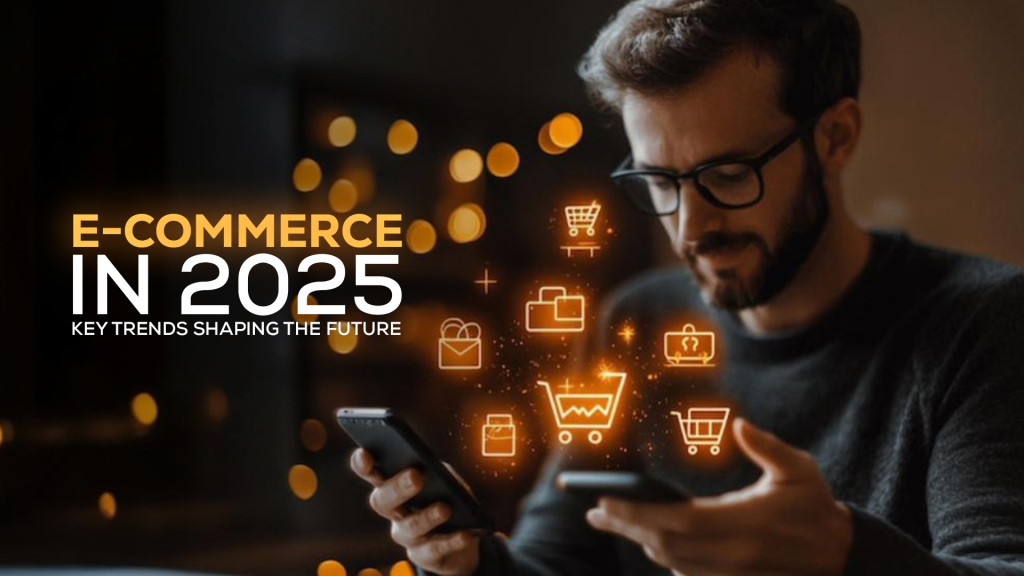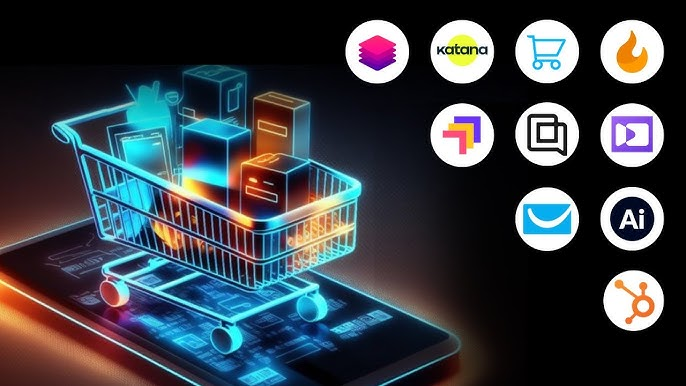The year 2025 is set to bring significant changes and exciting innovations to the e-commerce industry. Let’s explore the key trends that will shape the future of e-commerce.

I. Technological Advancements
A. Artificial Intelligence and Machine Learning
- Personalized Shopping Experiences: AI algorithms analyze customers’ browsing and purchase history to offer personalized product recommendations. For example, Amazon uses AI to suggest products based on individual preferences, increasing sales and customer satisfaction.
- Intelligent Customer Service: Chatbots and virtual assistants powered by AI can handle customer inquiries 24/7. They provide instant responses, resolve issues, and improve the overall customer experience.
B. Augmented Reality (AR) and Virtual Reality (VR)
- Virtual Try-Ons: AR technology allows customers to virtually try on clothes, shoes, and accessories. Apps like Lenskart enable users to see how glasses look on them before making a purchase3.
- Immersive Shopping Environments: VR creates immersive shopping experiences. Customers can explore virtual stores, interact with products, and even attend virtual events.
II. Changing Consumer Behavior
A. Sustainability and Ethical Shopping
- Eco-Friendly Products and Packaging: Consumers are increasingly concerned about the environment. They prefer to buy from brands that use sustainable materials and packaging. Companies like Patagonia are known for their eco-friendly practices.
- Ethical Sourcing and Production: Shoppers also care about how products are sourced and produced. Brands that disclose their supply chain information and ensure fair labor practices gain more trust.
B. Subscription-Based Models
- Convenience and Personalization: Subscription e-commerce is growing. Services like Birchbox offer personalized monthly boxes of beauty products. This model provides convenience and builds long-term customer relationships.
- Predictable Revenue Streams: For businesses, subscription models offer stable and predictable revenue. They also encourage repeat purchases and customer loyalty.

III. New Business Strategies
A. Omnichannel Integration
- Seamless Shopping Experiences: Retailers are integrating online and offline channels. Customers can order online and pick up in-store, or return online purchases at a physical store. Brands like Nike have implemented omnichannel strategies to enhance customer convenience.
- Real-Time Inventory Management: Omnichannel integration requires real-time inventory updates. This ensures that customers always have accurate information about product availability.
B. Social Commerce
- Shopping on Social Platforms: Social media platforms are becoming shopping destinations. Instagram and TikTok allow brands to showcase and sell products directly. Influencers also play a crucial role in promoting products and driving sales3.
- User-Generated Content and Reviews: Social commerce relies on user-generated content and reviews. Positive reviews and testimonials influence purchasing decisions, so brands encourage customers to share their experiences.
IV. Challenges and Opportunities
A. Data Security and Privacy
- Protecting Customer Data: With the increasing use of technology, data security and privacy are major concerns. E-commerce businesses must implement robust security measures to protect customer information.
- Complying with Regulations: Governments are introducing stricter data protection regulations. Companies need to stay compliant to avoid fines and reputational damage.
B. Logistics and Delivery
- Faster and More Efficient Delivery: Customers expect fast and reliable delivery. E-commerce companies are partnering with logistics providers to offer same-day or next-day delivery.
- Last-Mile Delivery Solutions: The last mile of delivery is often the most challenging. Innovations like drones and autonomous vehicles may help improve efficiency.

In conclusion, the e-commerce industry in 2025 will be shaped by technological advancements, changing consumer behavior, and new business strategies. While there are challenges, there are also many opportunities for businesses that adapt and innovate. By staying ahead of the trends, e-commerce companies can thrive in the competitive digital marketplace.




